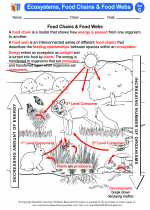Behavioral Adaptations
Behavioral adaptations are the actions and activities that an organism carries out to survive in its environment. These adaptations are developed over time through the process of natural selection, where organisms that exhibit certain behaviors that increase their chances of survival are more likely to pass on their genes to the next generation. Behavioral adaptations allow organisms to better respond to their environment, find food, avoid predators, and reproduce.
Examples of Behavioral Adaptations
There are many examples of behavioral adaptations in the animal kingdom. Some common examples include:
- Migration: Many birds and mammals migrate to different locations during different seasons to find food and suitable breeding grounds.
- Hibernation: Some animals, such as bears and groundhogs, hibernate during the winter months to conserve energy and survive when food is scarce.
- Camouflage: Many animals, such as chameleons and certain species of insects, have developed the ability to change their color to blend in with their surroundings and avoid predators.
- Communication: Animals use various forms of communication, such as vocalizations, body language, and chemical signals, to establish territories, attract mates, and warn others of danger.
- Nocturnal behavior: Some animals, such as owls and bats, are nocturnal, meaning they are active at night to avoid daytime predators and find food.
Study Guide
Here are some key points to remember about behavioral adaptations:
- Definition: What are behavioral adaptations? How do they help organisms survive?
- Examples: Provide examples of at least three different behavioral adaptations seen in animals.
- Importance: Why are behavioral adaptations important for the survival of species?
- Human Behavior: How do humans exhibit behavioral adaptations in their daily lives?
- Observations: Observe and record behavioral adaptations in a local ecosystem. What behaviors do you notice in different species?
Understanding behavioral adaptations is crucial for understanding how organisms interact with their environment and how they have evolved to survive in diverse habitats.
For further study, you can also explore how behavioral adaptations are related to other types of adaptations, such as physiological and structural adaptations, and how these three types of adaptations often work together to help organisms thrive in their environments.
[Behavioral Adaptations] Related Worksheets and Study Guides:
.◂Science Worksheets and Study Guides Seventh Grade. Ecosystems, food chains and food webs

 Activity Lesson
Activity Lesson
 Worksheet/Answer key
Worksheet/Answer key
 Worksheet/Answer key
Worksheet/Answer key
 Worksheet/Answer key
Worksheet/Answer key
 Vocabulary/Answer key
Vocabulary/Answer key
 Vocabulary/Answer key
Vocabulary/Answer key
 Vocabulary/Answer key
Vocabulary/Answer key
 Vocabulary/Answer key
Vocabulary/Answer key
 Vocabulary/Answer key
Vocabulary/Answer key
